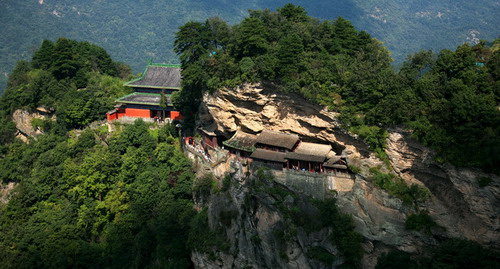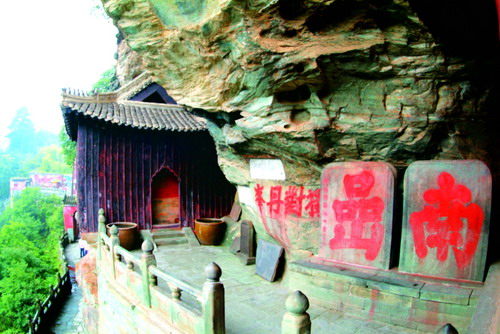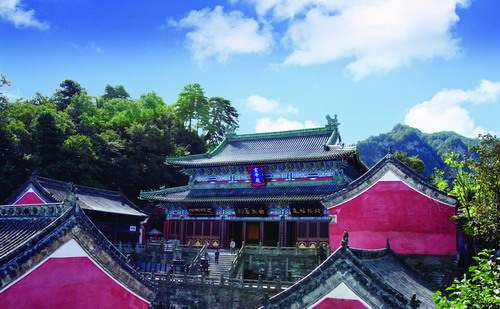South Crag
( chinadaily.com.cn )
Updated: 2011-07-11
|
 |
|
 |
The South Crag is named after the fact that it faces the south. Taoism views it as the holy land where the Zhenwu God, the Taoist god of Wudang Mountain, ascends to the heaven. Here there are beautiful peaks and cliffs and a thick forest facing the gully. It’s quite impressive among the 36 crags in Wudang Mountain for its tranquil and spectacular surroundings.
Built in the Yuan Dynasty (1271-1368), South Crag was renovated and expanded during later dynasties. The existing complex has 83 rooms for Taoist service and covers an area of 61,187 square meters. Taking full advantage of the natural environment such as hilltops, cliffs and grottos, the gate, pavilions, temples and palaces in the South Crag were built to fit with the surrounding. The buildings of South Crag break free from the traditional layout to create a pattern of architecture more in harmony with the environment. Craftsmen made use of the terrain to form the well-proportioned architecture complexes. In December 1996, the State Council listed it as a national key cultural site under national government protection.
The existing major buildings here include Dragon and Tiger Hall, Yuan Jun Hall, Stone Palace, Liang Yi Hall, South Palace, Scripture Hall, Prince Palace, Eight Diagrams Pavilion and the main palace.
South Celestial Gate: Built in 1413, South Celestial Gate is the only way to enter the South Crag. On Wudang Mountain, the buildings’ entrance is important because crossing the gate means walking into the divining area.
Stone Palace: In the South Crag, the most famous architecture for viewing scenery is a stone palace named Tianyi Zhenqing Palace. It's said that after the Wudang Taoist god Zhenwu ascended to heaven, he lived in Tianyi Zhenqing Palace. This stone palace is the one of the masterpieces of Chinese ancient architecture and is representative of ancient Chinese stone buildings. Tianyi Zhenqing Palace, made of stones, looks like wood. The roof beams, pillars, square timbers, windows, doors, joints and decorations of animal sculptures on the roof ridges, were carved from green stones and then combined. Tianyi Zhenqing Palace was built by a famous Taoist, Zhang Shouqing, at the beginning of the Yuan Dynasty (1271-1368) and was finished 27 years later. Zhang went to Wudang Mountain at the age of 30 and led thousands of disciples to reclaim wasteland, replant the land, cut the cliff and leave this marvelous spectacle for the later generations.

 |



